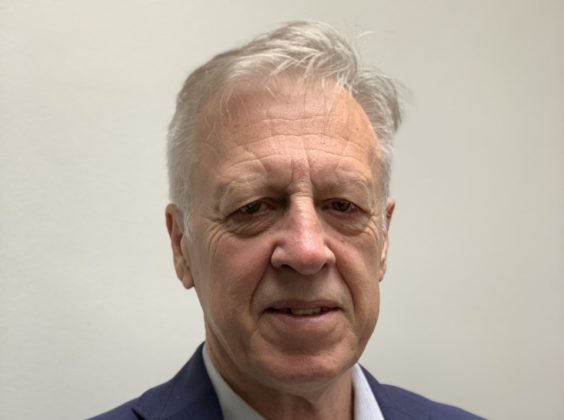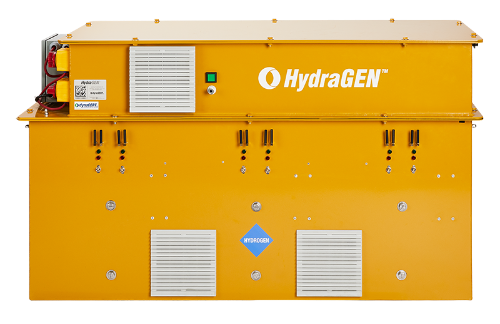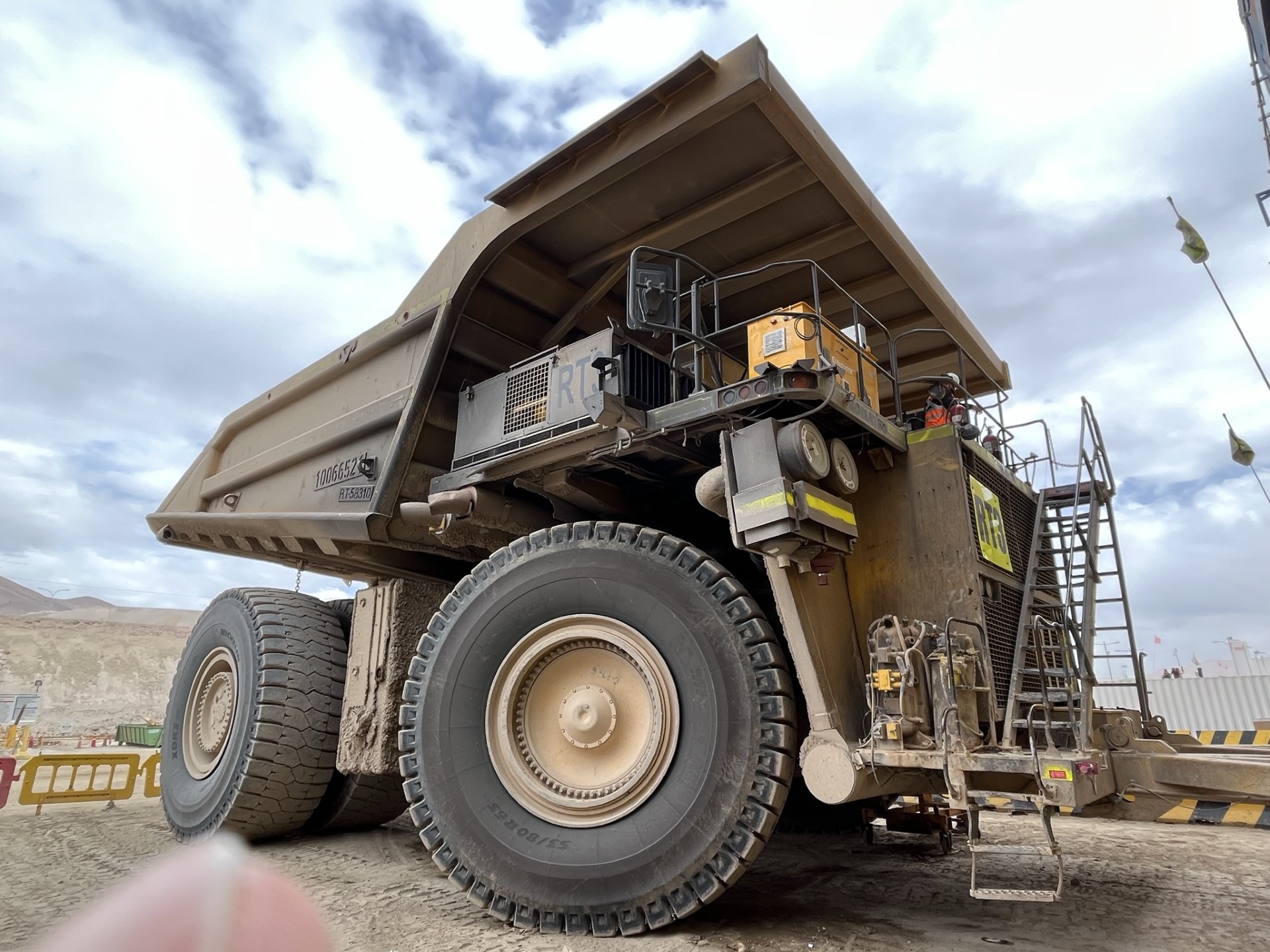As mining wrestles with how to speed up introduction of hybrid and fully BEV technology into truck fleets to meet stated emissions reduction goals – there are technologies available today that make a significant difference on existing fleets. IM Editorial Director Paul Moore caught up with DynaCERT CEO Jim Payne and Ed Cordeiro, Director of Sales, for a deep dive into the success so far for its HydraGEN™ hydrogen injection system.

 Jim Payne, DynaCERT CEO (left) and Ed Cordeiro, Director of Sales (right)
Jim Payne, DynaCERT CEO (left) and Ed Cordeiro, Director of Sales (right)
Can you give some background on DynaCERT and how you got into the mining sector?
JP: DynaCERT is not a new company – we have been around for over 20 years and have invested over US$100 million to develop the product and technology solution that we have today. We have certainly within the last few years gained a lot of recognition from within the mining industry. While our initial go to market sector was commercial transportation trucks, we are getting a lot of repeat orders from mining, and one of our key dealers H2 Tek deals primarily with mining customers. They have built up this business after travelling globally with Export Development Canada to visit major mining operations and better understand the potential. Today, we have a number of mines, but particularly in South America, that are utilising our technology across whole fleets of mining trucks, and are seeing benefits in multiple areas but primarily in fuel economy by 6-19% with a corresponding reduction in emissions and carbon footprint. Our system reduces the emissions by upwards of 50% on average, and within that reduces NOX by about 88%. It is also important to understand that this is reduced right at the source during the combustion. It is not a filtration system – what we do is introduce measured amounts of hydrogen and oxygen to the intake of the internal combustion engine to enhance the efficiency of the fuel burn. In simple terms, we are helping the diesel engine get the full power/burn and therefore full use of the energy in the diesel. The big open pit miners with large fleets of haul trucks who are using it are seeing a payback in only 6 to 9 months with the added fuel economy. But the emissions reduction and lower carbon footprint is also very important for them with their ESG and decarbonisation goals. It is a real win win for them.
Is another part of its appeal the fact that it brings these wins from the existing fleet along with its ease of integration? What sort of support is needed for the systems in terms of onsite parts and maintenance?
EC: One of the major benefits and advantages of our technology versus other hydrogen injection systems is that we have combined the electrolysis with electronics. We have an ECU that controls the operation of our units and monitors them like an asset tracking tool. It also allows us to directly monitor the unit wherever it has been deployed plus we offer a software platform that provides a dashboard for the customer. We get alerts as to the current status of the units – are they on or off – do they need water etc. Installation on the large mining trucks is relatively easy. They are quite heavy so need to be hoisted up to the platform for mounting, usually close to the cab, but in some cases on the front bumper. After that it is just a connection to the alternator and a hose that connects to the air intake. On average it involves about four hours of installation time. After that it just requires water refilling every 80 hours or so – in warmer climates we can also add an external reservoir to increase this refill time up to about 800 hours.
The DynaCERT HydraGEN HG6C is the unit used on larger mining trucks

Is there a particular model of HydraGEN that has been applied on the larger mining trucks?
JP: We have units on all of the major mining truck models including from Komatsu and Caterpillar, which account for most of the mining truck market. Our HydraGEN range consists of different sized units to match different engine litre sizes. So we have everything from the HG1 and HG2 which were our flagship initial products used on smaller class off highway trucks; then we have our HG4C and HG6C units which are those deployed on larger mining trucks of 100 t class upwards right up to 400 t class units. But even the HG6C is still just the size of a small freezer, so in comparison to the truck they are fitted to, they are not particularly large. As stated, the only regular maintenance is refilling of water – but with our electronics this is constantly monitored and shown just like a fuel gauge. If the water is not refilled, the unit will switch off itself as it is many built in safety devices. Importantly, there is no modification to the engine whatsoever.
Are the emissions and fuel efficiency benefits greater for older trucks as opposed to newer ones? For example with lower Tier rated engines – and are these the priority for the users?
EC: When you look at the emissions side, yes the newer trucks may not see as great a benefit – but by giving the fuel a complete burn you are still increasing efficiency – and we see fuel savings across the board. For older engines we see an initial clean out period where there is a delay to positive results due to all the carbon being cleaned from the engine, but after that period of a few weeks, there really is a significant difference. Several years ago, MTU Detroit Diesel carried out some tests on HydraGEN where they ran two identical older trucks, one with the system and one without. After two months of running the same mileage, they brought the trucks in and broke the engines down – the oil in the engine with our unit came back with less than 1% soot content, while the other truck had an 8% soot content. They also pulled the heads off both the engines – the engine with HydraGEN was completely clean, while other engine had carbon deposits that had to be chiselled off. There are so many added benefits, not least the prolonged life of the engine, greater oil life, and a cleaner fuel burn. We also see increased power torque to the point where it is noticed by operators. As an aside, HydraGEN is not just being used in mining on mobile equipment – Vale purchased from H2 Tek four HG6C units for a single large diesel power generator for use at the remote Voisey’s Bay, Newfoundland & Labrador nickel mine to be used on a 4.5 MW generator.
Given all of this, why is it not yet a standard fitment to mining trucks or to the mining engines themselves? Or supplied by OEM or engine dealers?
JP: Up until now our focus has been mainly on retrofitting HydraGEN – that said our new President Bernd Krueper comes from the OEM world with a 30-year professional career at major engine companies like Mercedes-Benz (Daimler), HATZ, MTU, Rolls-Royce, and Tognum. We are now having ongoing talks and discussions with OEMs, both on the truck and engine side, about potential collaborations and partnerships. And I think this has partly been driven by the fact that mining houses have realised that the transition to BEVs, especially in larger mining equipment, is going to take a lot longer and involve a lot more complexity than first thought. In that sense, finding emissions reductions and fuel efficiencies from existing fleets has become a top priority. Diesel engines are not going anywhere anytime soon. We have the technology today to make a significant difference. It makes a difference right at the source – at combustion.
EC: Within the mining sector, many sites were considering BEVs for some of their heavy applications and started with smaller machines – but even in these cases it has often not been working for them. At DynaCERT we actually see pure hydrogen as being a better option long term, but we are also a long way off from that as the infrastructure isn’t yet there. Diesel mining trucks are going to be here for some time, and we help make diesel greener immediately while providing that economic benefit. At the same time, we are a bridge technology to hydrogen and have also invested in a company called Cipher Neutron which is involved in AEM technology – the produce high pressure, high volume green hydrogen. So while we bring HydraGEN into mining fleets, we are positioning ourselves to stay at the forefront of the hydrogen economy for years to come.
There are some other companies that have put forward hydrogen injection technologies for engines in mining – what are the differentiators for HydraGEN?
JP: You can go back over 50 years and there are white papers and articles where it has been proven and is a known fact that trace amounts of hydrogen introduced into a combustion engine enhances the burn. But the challenge has always been that you have to have exactly the right mixture to get the benefits. That is where we at DynaCERT have spent a lot of effort and millions of dollars in engineering and development to come up with a product that is fully computerised, where we are introducing highly measured amounts of hydrogen. We hold 27 worldwide patents on this, and its been tested, certified and validated globally. While we are a Canadian company, we are active in 55 countries, mainly working through dealers, including H2 Tek and its very mining specific focus. Yes it has taken a few years to create an awareness in mining, but today we are mainly getting large repeat orders – these mines have tried our product and have seen the benefits and are now outfitting entire fleets. Last September 2024 saw a single shipment of 119 units to three open pit mines in Peru and Brazil. South America has really been central to our mining success to date across Peru, Brazil, Argentina and Chile. Our customers include some of the biggest miners in that region including Codelco, Antamina and Nexa Resources. Codelco and H2 Tek completed a successful pilot of two HG6C units on large Komatsu 930E haul trucks at the Division Ministro Hales (DMH) mine in Chile. Antamina, one of the largest mines in the world, and the largest Peruvian producer of copper concentrate, purchased from H2 Tek three HG6C units which were installed in large mining haul trucks. We are also seeing a lot of growth in mining in Australia, working with our dealer there, GridFix/Net2Zero. We have no complete mining fleets yet, but some customers have installed HydraGEN on over 200 units. We have definitely passed a tipping point in mining. We have been helped to some extent by ESG reporting and emissions targets that miners have set themselves – this has opened the doors to a lot of opportunities as with our technology they get a huge Scope 1 emissions step up with relatively little investment.
EC: Going back to our differentiators, and a lot of this relates to our system’s electrolysis methodology. The flame speed of hydrogen is nine times faster than the flame speed of diesel, so burning diesel in the presence of hydrogen will result in overall faster and more complete combustion. This results in higher peak pressure closer to the top dead centre (TDC) and therefore, will produce a higher effective pressure to do work. Even a small amount of H2 & O2 injected into the air intake to enhance diesel combustion decreases the brake specific fuel consumption (bsfc) regardless of the level of load. Plus, the induction of H2 & O2 contains oxygen; as a result, the increase in the air-fuel ratio improves the combustion resulting in lower fuel consumption and better efficiency. Hydrocarbons and CO2 are reduced, due to the absence of carbon in hydrogen fuel and also due to better combustion of diesel fuel with the aid of hydrogen which has a higher flame speed. Although CO values for neat diesel operation is relatively lower, by inducting H2 & O2 into diesel the CO amount is further reduced. DynaCERT created partnerships to perfect a technology that would deliver on the promising findings with H2 & O2 injection. Not only have we developed patent-pending technology, we have completed testing and have validated that our technology works. Our patent-pending electrolysis system and Smart ECM provides a reliable and adjustable delivery of H2 & O2 concentrations – our computer communicates directly with the engine’s computer. Not all engines are the same and having the optimal ratio of gases provides increased benefits. Our technology is leading edge and provides solutions without drawing excessive power to perform the task. And it is designed to work with OEM manufacturers and compliment technological improvements. We have also spent the last two and a half years going through the process of being certified for carbon credits. We are working with Verra and our methodology has been approved – plus our proprietary HydraLytica telematics is a means of monitoring fuel consumption and calculating GHG emissions savings designed for the tracking of possible future carbon credits for use with internal combustion engines. It is 100% data driven with no guesswork and measured in real time. It has been set up in such a way that the user would get 50% of the carbon credits and we would get the other 50%. So it becomes a new and recurring revenue stream.
Do mining customers buy your HydraGEN units outright, or do they rent them or are both options possible? And beyond the unit itself do they need any other infrastructure on-site?
JP: For the majority of units, the customer buys them outright but we do have some where they come under a service-based lease contract. The only set up required is the regular topping of distilled water to the system but as stated we also have auto-refill capabilities for some of our larger units that are useful in mining applications. Plus via HydraLytica we provide notifications both to the operator and to the fleet management system. This provides three different warnings over several hours that the water needs topping up. If they don’t do it, the unit will shut itself down safely anyway and the engine will revert to conventional conditions. Typically the water refill would be done somewhere that trucks are already being serviced in some way such as at the fuel farm. For the 800 hour system we have developed, this dovetails with the truck’s regular service at around 750 hours.










